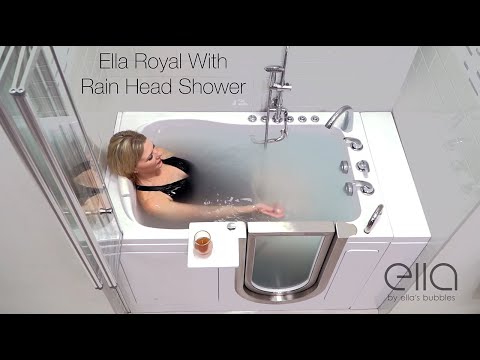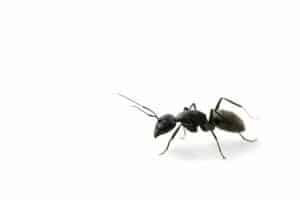As we age, the spaces we live in must evolve to meet our changing needs, especially in areas of our homes like the bathroom, where safety and accessibility become paramount. Walk in bathtubs represent a transformative solution for seniors and individuals with limited mobility, merging safety, comfort, and independence into one essential bathroom feature.

These specialized tubs offer an array of benefits, from reducing the risk of falls to providing therapeutic relief for aching joints. Whether you’re considering a bathroom remodel for accessibility or planning to install a walk-in tub for a loved one, understanding these aspects will help you make informed decisions that prioritize well-being and ease of use.
Walk in Bathtub Features
Here are the main features that make walk-in bathtubs particularly beneficial for elderly users:
Low Threshold Entry
Walk-in tubs have a door on the side that allows users to enter without having to climb over a high ledge, which is common in traditional bathtubs. This reduces the risk of falls when entering or exiting the tub.
Built-in Safety Bars
These handrails provide support for seniors as they move in and out of the tub, helping to maintain balance and prevent slips.
Non-Slip Flooring
The floors of these tubs are textured to provide traction, which reduces the risk of slipping even when the surface is wet.
Comfortable Seating

Walk-in tubs usually include a built-in seat, which allows seniors to sit comfortably while bathing rather than having to lower themselves to the floor of the tub.
Easy-to-Use Controls
Controls are designed to be simple to operate, often with large buttons and clear labels to adjust water temperature and jet speeds without confusion.
Therapeutic Features

Many walk-in tubs offer therapeutic options such as hydrotherapy jets, air jets, or even chromotherapy lighting, which can help soothe aches and pains, improving circulation and relaxation.
Water-Tight Door Seal
The seal on the door ensures that water remains inside the tub and does not leak out when the tub is filled, providing both safety and convenience.
Emergency Release Drain
To ensure safety in case of an emergency, these tubs often come with a quick-release drain that allows water to be rapidly emptied.
Cost Breakdown and Financing Options for Walk-In Bathtubs
Detailed Cost Breakdown
Investing in a walk-in bathtub is a significant decision that involves various costs beyond just the purchase price of the tub. Here’s what you should consider:
| Cost Category | Estimated Cost Range |
|---|---|
| Purchase Price | $2,000 – $7,000 |
| Removal of Old Bathtub | $300 – $500 |
| Plumbing Upgrades | $500 – $1,500 |
| Electrical Work | $200 – $800 |
| Installation | $1,000 – $3,000 |
| Finishing Costs | $100 – $1,000 |
| Total Estimated Cost | $4,100 – $13,800 |
Financing Options and Subsidies
Understanding the financial investment involved, there are several financing options and subsidies available to help make walk-in bathtubs more accessible:
- Payment Plans: Many companies selling walk-in tubs offer financing plans that allow you to pay for the tub over a set period. This can help manage the immediate financial burden by spreading it over months or years.
- Grants and Subsidies: Various government programs and nonprofits offer grants or subsidies for home modifications needed due to age or disability. For example, Medicaid’s Home and Community-Based Services (HCBS) may cover part of the cost under certain conditions.
- Veterans Benefits: Veterans might qualify for assistance through the Department of Veterans Affairs, which offers programs like the Home Improvements and Structural Alterations (HISA) grant, specifically aimed at home modifications for medical needs.
- Tax Deductions: Costs associated with installing a walk-in bathtub may be tax-deductible if they are part of medical home improvements. It’s advisable to consult with a tax professional to understand how you might benefit.
.jpg)
Installation and Maintenance of Walk-In Bathtubs
Installation Process
The installation of a walk-in bathtub is a critical process that typically involves several key steps and can significantly vary in timeframe depending on the existing bathroom layout and plumbing. Here are the general steps and considerations:
- Assessment and Measurement: Before installation begins, a thorough assessment of the existing bathroom is necessary to ensure that the new tub will fit properly. This includes measuring the space and assessing the existing plumbing and electrical systems.
- Removal of Existing Tub: The existing bathtub or shower unit must be removed, which might involve some demolition and plumbing disconnection. This step can be messy and may require adjustments to existing tiles and walls.
- Plumbing Adjustments: Walk-in tubs often require different plumbing configurations due to their unique features like internal heating and jets. Professional plumbers may need to adjust water supply lines and drain systems.
- Electrical Work: Some walk-in tubs come with features that require electrical wiring, such as whirlpool jets or inline heaters. It’s essential to have a licensed electrician perform this work to comply with local building codes and ensure safety.
- Installation of the New Tub: Once the space is prepared, the tub can be installed. This involves securing it in place, connecting it to the plumbing and electrical systems, and ensuring all seals are water-tight.
- Finishing Touches: The final steps often involve sealing the tub, reinstalling surrounding tiles or walls, and making any necessary cosmetic adjustments.
The entire process can take anywhere from one to several days, depending on the complexity of the job and any unexpected issues that arise during installation.

Maintenance Tips
Regular maintenance is crucial for ensuring that your walk-in bathtub remains in good working condition and continues to provide safe and comfortable bathing experiences. Here are some maintenance tips to follow:
- Regular Cleaning: Clean the tub after each use to prevent the buildup of soap scum and minerals. Use non-abrasive cleaners to avoid scratching the surface or damaging the finish.
- Inspect Seals and Door Function: Check the door seal regularly to ensure it’s intact and free of cracks or leaks. The door’s function should be smooth, with no resistance or unusual noises.
- Check and Clean Jets: If your tub has air or water jets, make sure to clean them according to the manufacturer’s instructions to prevent blockages and build-up of bacteria or mold.
- Drain Maintenance: Regularly flush the drain system to prevent clogs. This is especially important if the tub is used frequently or if bath oils and similar substances are used.
- Professional Inspections: Have a professional inspect and service the tub annually. They can check electrical components, plumbing, and other mechanical parts that might be difficult for a layperson to assess.
By following these guidelines, you can help extend the life of your walk-in bathtub and ensure it remains a safe, enjoyable part of your daily routine.

FAQs: Walk in Bathtubs
1. Are walk-in bathtubs good for seniors?
Yes, walk-in tubs are excellent for seniors due to their safety features like low thresholds, non-slip flooring, and built-in seats. These features minimize the risk of falls and make bathing safer and more accessible for elderly individuals with mobility issues.
2. What is an alternative to a walk-in tub?
An alternative to a walk-in tub is a zero-entry shower, also known as a walk-in shower. These do not require stepping over a threshold and can be equipped with grab bars, seating options, and non-slip floors to enhance safety and accessibility.
3. What is the real cost of a walk-in tub?
The cost of a walk-in tub can vary widely based on features, installation needs, and brand. Prices generally range from $2,000 to $7,000, not including installation, which can add an additional $1,000 to $3,000 depending on plumbing and space modifications.
4. What is the safest bathtub for seniors?
The safest bathtubs for seniors are walk-in tubs equipped with safety features such as handrails, anti-slip flooring, low step-in height, and easy-to-use doors. These features help prevent falls and make the tub more accessible for seniors with limited mobility.








